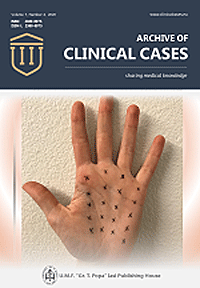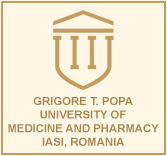Hodgkin's lymphoma, Reed-Sternberg cell
Hodgkin's lymphoma is a primary malignant tumor of the lymph nodes, rarely affecting the extranodal lymphoid tissue. The diagnosis criteria are: tumor component (Reed-Sternberg cell - typical and variants) and a reactive component (normal mature lymphocytes, eosinophils, plasma cells, neutrophils, fibrosis and capillaries).
Histological classification of Hodgkin's lymphoma (according to lymph node architecture, ratio between tumor and non-tumor components, morphology of Reed-Sternberg cell and compositon of reactive infiltrate) :
- (Non-classical) Nodular lymphocyte predominant Hodgkin's lymphoma (5 %)
- Classical Hodgkin's lymphoma
- Nodular sclerosing (60 - 80 %)
- Lymphocyte-rich (5 %)
- Mixed cellularity (15 - 30 %)
- Lymphocyte depleted (< 1 %)
Variants of Reed-Sternberg cell (RSC) :
- Hodgkin's cell (atypical mononuclear RSC)
- Lacunar Reed-Sternberg cell (RSC)
- Pleomorphic Reed-Sternberg cell (RSC)
- Limfo-histiocytic ("pop-corn") variant
- "Mummy" Reed-Sternberg cell (RSC)

Presence of typical Reed-Sternberg cell and reactive component are mandatory for diagnosis of Hodgkin's lymphoma. Characteristics of typical Reed-Sternberg cell : size between 20 - 50 microns; abundant, amphofilic, finely granular/homogenous cytoplasm; two mirror-image nuclei ("owl eyes") each with an eosinophilic nucleolus and a thick nuclear membrane (chromatin is distributed on the inner surface of the nuclear membrane, generating a halo image around the nucleolus). Reed-Sternberg cell has a B-cell origin. (H&E, ob.x40)

